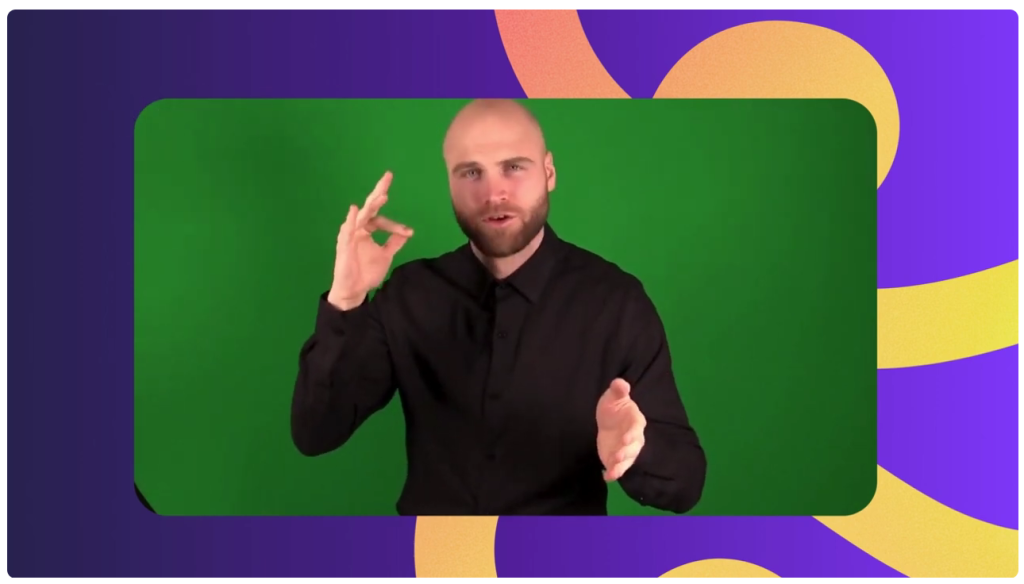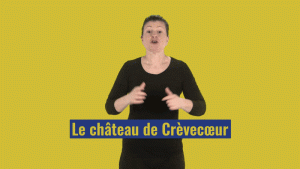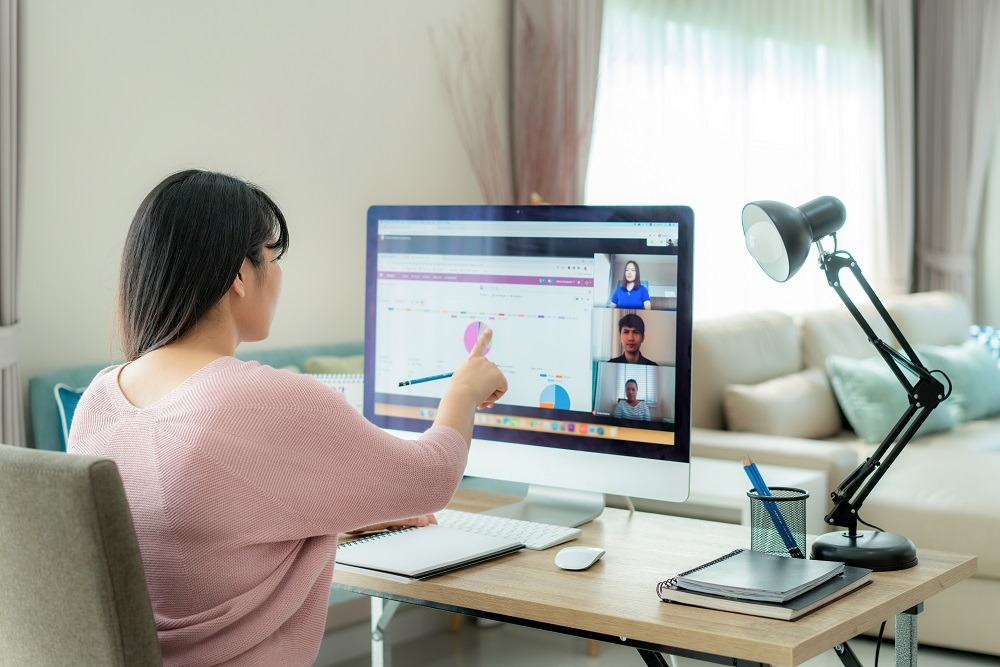What kind of experience does a person who uses sign language have with your company? Can they easily understand your communications?
Sign language content creation is an essential solution for businesses and organizations that want to make sure everyone can access their services and products in the format that works best for them. It is also a great way to remove barriers that make life more difficult for people who are Deaf or hard of hearing and communicate primarily in a sign language.
In this article, we’ll take a deep dive into sign language content creation, how it works, who benefits from it, what legal requirements it fulfills, and how it is used in real-world applications. Let’s start with a quick introduction to the main terms in the article.
Sign Language Content Creation Basics
Sign language is a visual system of communication using hand movements, facial expressions, and body movements. Each sign language is a complete, natural language with its own grammar, syntax, and vocabulary. These languages are not just a visual representation of spoken languages.
American Sign Language (ASL) is the most common sign language used by people who are Deaf and hard of hearing in the United States and Canada. It is different from other sign languages in English-speaking countries like British Sign Language and Auslan, the sign language used in Australia.
Signers in the province of Quebec and other parts of eastern Canada primarily use Langue des signes quebecoise. In France, the main sign language is Langue des signes française, and in Mexico, signers use Lengua de señas mexicana. Most countries and regions have their own distinct sign languages that evolve organically over time, much like spoken languages.
There is no universal sign language. The closest equivalent is International Sign, a simplified sign system that borrows from multiple languages. It is not a fully developed natural language like ASL, LSQ, LSF or LSM. International Sign is mainly used as a bridge between people who speak different sign languages.
Sign language content creation is the process of producing videos that feature a professional Deaf or hearing signer communicating your message in a sign language. This doesn’t happen live so the sign language professional has time to consider linguistic and cultural nuances.
Sign language content creation is different from sign language interpretation, which provides real-time communication for events such as business conferences, press conferences, news broadcasts or concerts.
How does sign language content creation work?
We work with our team of expert sign language interpreters and video production specialists to prepare the script and record the video content. We then do post-production and quality checks before delivering a final video you can share right away.
Your content can be used as a stand-alone video, added to pre-recorded videos like webinar replays or featured on your website to provide sign language translation of written information.
What are some best practices for sign language content creation?
- Work with native Deaf signers or certified sign language interpreters who are fluent in the specific sign language you’re targeting (such as ASL, LSQ or LSF). This way, your content will:
- Be linguistically accurate and culturally relevant
- Feature authentic facial expressions and body language
- Build greater trust and connection with Deaf and hard-of-hearing audiences
- Produce videos with visibility and clarity in mind
- Record with a high-definition camera mounted on a tripod
- Use a clean, uncluttered background
- Center the signer in the frame from the waist up and record from a medium distance in horizontal orientation
- Make sure there is high contrast between the signer and the background
- Make sure the signer is well lit and wearing clothing that contrasts with their skin color
- Avoid distractions like text overlays or animations near the signer
- Include sign language early in the production process
- Properly adapt the script for signed language
- Coordinate schedules with interpreters or Deaf actors
- Make sure visuals and sign content can be integrated smoothly
- Gather feedback directly from Deaf or hard-of-hearing users before publishing. This helps you:
- Catch misunderstandings or misinterpretations
- Refine clarity and tone
- Build trust with your audience through genuine inclusion
- Consider adding additional accessibility features
- Add open captions for viewers who prefer to read
- Provide audio descriptions where applicable for blind or low-vision users
Who benefits from ASL content?
The real issue for people who are Deaf or hard of hearing is the lack of accessibility, not their hearing ability. Inaccessibility is created when content is only available in spoken or written form. While signers often read English, sign language videos help them get the full message directly in their language for a barrier-free experience.
Companies and other organizations that provide accessible communication also benefit! They reach a wider audience and connect directly with the Deaf community, which can increase sales, share critical information more widely, and boost engagement with website content.
How does this service help fulfill legal requirements?
In the United States, the Americans with Disabilities Act requires that public and private entities like employers, state and local governments, businesses open to the public, transportation providers, and telecom companies:
- Communicate in equally effective ways with everyone regardless of disability
- Provide appropriate “auxiliary aids and services” when necessary to ensure effective communication
In Canada, the Accessible Canada Act requires federally regulated entities like government departments, banks, and telecom and transport companies to:
- Identify, remove, and prevent barriers to accessibility, including in communication
- Ensure that communication methods are inclusive and accessible to individuals with different disabilities
In France, the Loi du 11 février 2005 and related decrees (especially Décret n° 2017-431 and Décret n° 2017-432) state that public and certain private services must provide reasonable accommodations to ensure accessible communication.
What are some examples of sign language content?
Museums & Cultural Exhibits
In France, the Fondation Musée Schlumberger at Château de Crèvecoeur created a video version of their guided tour so guests who sign LSF can be fully immersed in the visit.
Government & Public Services
Elections Canada provides information in ASL, like this video about voting at an Elections Canada office, so Deaf citizens can fully participate.
TV and Streaming Services
The U.S.-based PBS Kids media company provides full-length versions of their popular show Daniel Tiger’s Neighborhood with ASL translation.
What types of materials can be created in a sign language?
Do you need inspiration for what content to create? Let’s look at a few examples.
Employment & HR
Legal & Compliance
Customer-Facing Information
Why should I choose ITC Global for sign language content creation?
Prioritizing accessibility is good for people and good for business! ITC Global’s team has the experience and expertise to produce sign language content that complies with legal requirements and accessibility standards so you can remove communication barriers and provide equal access for people who are Deaf and hard of hearing.
Contact us today or visit our Accessibility Solutions page for more details or to get started creating sign language versions of your essential communications.



